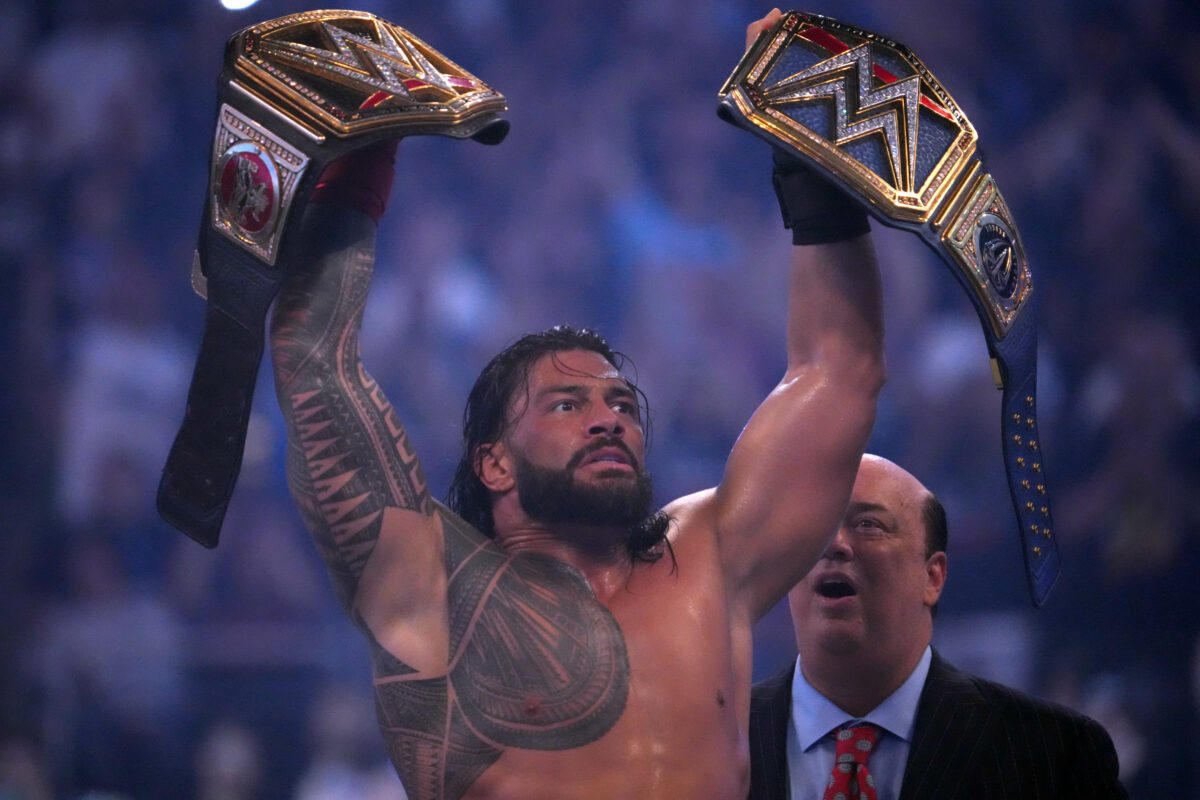Speculation about whether WWE will end its brand split, with different talent appearing on Raw and SmackDown, is like discussion of the weather. It’s constant, everyone has at least some opinion on it, and there’s always a bit of uncertainty involved.
The current moment in time is no different. Bryan Alvarez of Wrestling Observer Live (h/t to Aidan Gibbons of Cultaholic for the transcription) recently reported that the brand split is “essentially done” and that while he didn’t expect an official announcement to be imminent, “They’re just going to do whatever.”
Raw and SmackDown have been separate brands more often then not for the past 20 years (meaning it’s been on except for a time between 2011 and 2016). The split was initially conceived as a way to produce both variation, a sense of distinct identity for WWE’s two weekly shows, and as a way to manufacture some sense of competition that was lost when WCW went down the drain and was acquired by WWE.
The degree to which WWE has stuck to the idea of its shows as completely separate entities has varied over the years. At its height, the split led to things like brand-specific pay-per-views, which maximized the company’s product while watering the shows down quite a bit — and to be fair, the biggest events still featured performers from both brands.
Most of the time, however, WWE has treated the separation of the red and blue shows like Doctor Who treats the rules of time travel: It stuck to the split most of the time, but ignored it when creatively convenient to do so.
That could certainly be the case again here, but if WWE wants to call a more formal end to the brand split, there couldn’t be a more perfect time than right now.
It starts with the most obvious facts. Both of the most important men’s titles on each show, the WWE Championship (for Raw) and WWE Universal Championship (for SmackDown), are in the hands of the same Superstar, Roman Reigns. The same is true for both sets of men’s tag team titles, recently unified by The Usos, albeit with a huge assist from Reigns.
WWE hasn’t shown any signs of having Reigns defend his championships separately, and it would be silly for the Usos to do it so soon after unifying theirs. That means the Bloodline is inherently going to float between shows for the foreseeable future.
The women’s tag team titles have always been a cross-brand affair, the exception to the rest of the company’s championships. They’re currently vacant thanks to an incident you may have heard about, but WWE is planning a tournament to find new titleholders soon. Once they’re crowned, they’ll likely be regulars (or not, considering how little WWE seems invested in that championship) on Raw and SmackDown.
[lawrence-related id=2135]
Having those champs appear on Mondays and Fridays has ripple effects on the rest of the roster. If Riddle is the next man up to challenge Reigns, as appears to be the case, it doesn’t make sense to restrict him to a single show. The same goes for the Street Profits or whoever ends up as the No. 1 contenders to the Usos.
There are also more subtle signs that the split is dissolving that aren’t related to any titles. The returning Lacey Evans has had her story told on both Raw and SmackDown, which could signal that WWE isn’t sure where she fits best, or that she could appear on both of them. If the latter is the plan for Evans, it could be the same for more Superstars who are returning or repackaged.
The complicating factor is that Fox has reportedly asked for exclusive talent for SmackDown, which is its right to request as a broadcast partner. Still, it’s hard to imagine that WWE can’t make a powerful argument that having the biggest names appear on Friday nights, or even up and comers like Theory, wouldn’t benefit SmackDown — adding more than a lack of exclusivity takes away.
On top of all of these considerations is the fact that because of roster cuts and departures, the WWE’s overall talent cupboard simply isn’t bursting at the seams as it once was. The leadership appears to recognize it with moves like unifying the titles and streamlining the overall number of storylines it has in play.
The most likely outcome is that WWE won’t formally end the brand split and will continue doing what it’s done for most of the last two decades, which is to pay lip service to it while ignoring it as needed. But if there were ever a time to take the next step and officially dispense with it, this is it.
